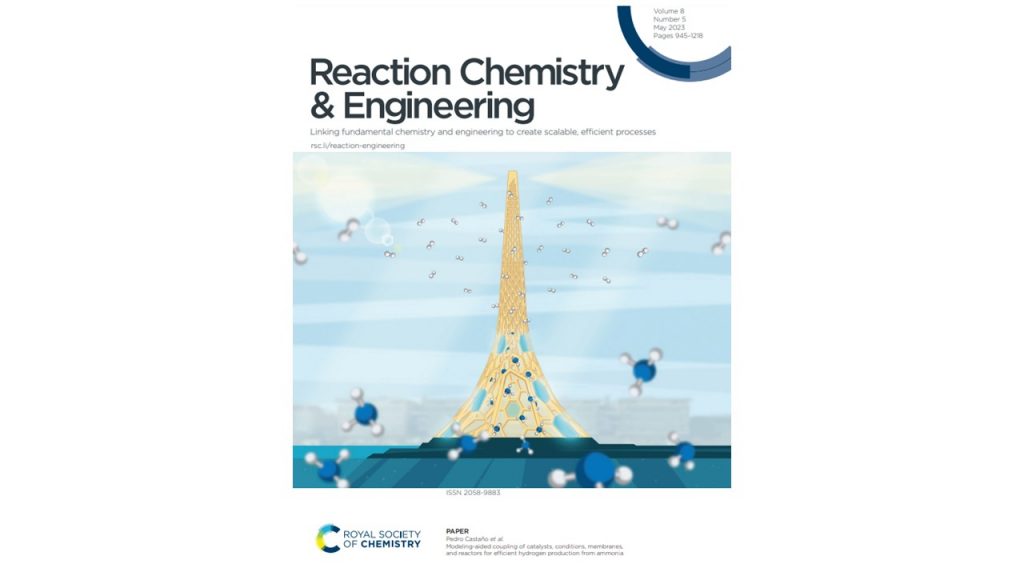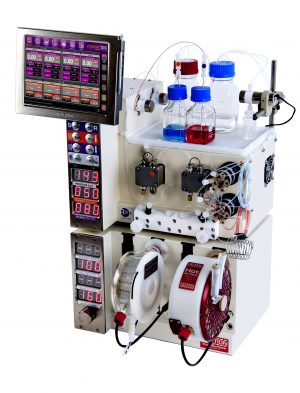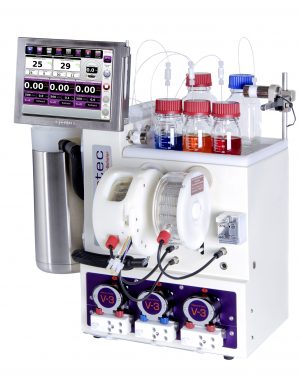Efficient degassing and ppm-level oxygen monitoring flow chemistry system
- Paulius Baronasa
- Jacob Lynge Elholma
- Kasper Moth-Poulsena,b,c,d
- aThe Institute of Materials Science of Barcelona, ICMAB-CSIC, Bellaterra, 08193, Barcelona, Spain
- bCatalan Institution for Research & Advanced Studies, ICREA, Pg. Lluís Companys 23, 08010 Barcelona, Spain
- cDepartment of Chemical Engineering, Universitat Politècnica de Catalunya, EEBE, Eduard Maristany 10–14, 08019 Barcelona, Spain
- dChalmers University of Technology, Department of Chemistry and Chemical Engineering. SE-412 96 Gothenburg, Sweden

Low oxygen levels are critical for a long range of chemical transformations carried out in both flow and batch chemistry. Here, we present an inline continuous flow degassing system based on gas permeable membrane inside vacuum chamber for achieving and monitoring ppm-level oxygen concentrations in solutions. Oxygen presence was monitored with a molecular oxygen probe and a continuously running UV-Vis spectrometer. An automated setup for discovering optimal reaction conditions for minimal oxygen presence was devised. The parameters tested were; flow rate, vacuum pressure, solvent back-pressure, tube material, tube length and solvent oxygen solubility. The inline degassing system was proved to be effective to remove up to 99.9% of ambient oxygen from solvents at a flow rate of 300 μl/min and 4 mbar vacuum pressure inside the degassing chamber. Reaching lower oxygen concentrations was limited by gas permeation in the tubing following the degassing unit, which could be addressed by purging large volume flow reactors with an inert gas after degassing. Among all factors, oxygen solubility in solvent was found to play a significant role for achieving efficient degassing of solvents. Data presented here can be used to choose optimal experimental parameters for oxygen sensitive reactions in flow chemistry reaction setups. The data was also fitted to an analytically derived model from simple differential equations in physical context of the experiment.
Get in touch
For more information on flow chemistry systems and services please use the contact methods below.
Call us on +44 (0)1284 728659 or Email us
Resource Centre
R-Series

The Vapourtec R-Series is, quite simply, unrivalled for flow chemistry
- Flexible |
- Precise |
- Automatable
The R-Series is undoubtedly the most versatile, modular flow chemistry system available today.
E-Series

The Vapourtec E-Series is the perfect introductory system for flow chemistry
- Robust |
- Easy to use |
- Affordable
The E-Series is a robust and affordable, entry level flow chemistry system designed for reliability and ease of use.
